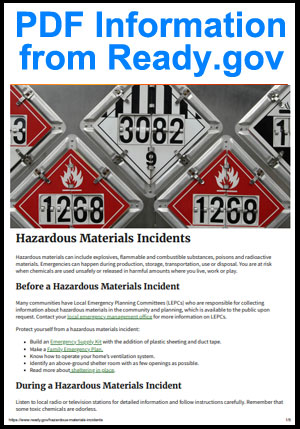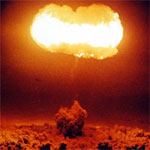Oil Spill
How do Oil Spills Happen?
Oil spills into rivers, bays, and the ocean most often are caused by accidents involving tankers, barges, pipelines, refineries, drilling rigs, and storage facilities.
Spills can be caused by:
- people making mistakes or being careless.
- equipment breaking down.
- natural disasters such as hurricanes.
- deliberate acts by terrorists, countries at war, vandals, or illegal dumpers.
Then what happens?
Oil floats on saltwater (the ocean) and usually floats on freshwater (rivers and lakes). Very heavy oil can sometimes sink in freshwater, but this happens very rarely. Oil usually spreads out rapidly across the water surface to form a thin layer that we call an oil slick. As the oil continues spreading, the layer becomes thinner and thinner, finally becoming a very thin layer called a sheen, which often looks like a rainbow. (You may have seen sheens on roads or parking lots after a rain.)
What Happens After An Oil Spill?
Depending on the circumstances, oil spills can be very harmful to marine birds and mammals and also can harm fish and shellfish. You may have seen dramatic pictures of oiled birds and sea otters that have been affected by oil spills. Oil destroys the insulating ability of fur-bearing mammals, such as sea otters, and the water-repelling abilities of a bird's feathers, thus exposing these creatures to the harsh elements. Many birds and animals also ingest (swallow) oil when they try to clean themselves, which can poison them. Depending on just where and when a spill happens, from a few up to hundreds or thousands of birds and mammals can be killed or injured.
How do people clean up the oil?
Once oil has spilled, any of various local, state, and federal government agencies as well as volunteer organizations may respond to the incident, depending on who's needed. People may use any of the following kinds of tools to clean up spilled oil:
- booms, which are floating barriers to oil (for example, a big boom may be placed around a tanker that is leaking oil, to collect the oil).
- skimmers, which are boats that skim (scoop) spilled oil from the water surface.
- sorbents, which are big sponges used to absorb oil.
- chemical dispersants and biological agents, which break down the oil into its chemical constituents.
- in situ burning, which is a method of burning freshly spilled oil, usually while it's floating on the water.
- washing oil off beaches with either high-pressure or low-pressure hoses.
- vacuum trucks, which can vacuum spilled oil off of beaches or the water surface.
- shovels and road equipment, which are sometimes used to pick up oil or move oiled beach sand and gravel down to where it can be cleaned by being tumbled around in the waves.
Which methods and tools people choose depends on the circumstances of each event: the weather, the type and amount of oil spilled, how far away from shore the oil has spilled, whether or not people live in the area, what kinds of bird and animal habitats are in the area, and other factors. Different cleanup methods work on different types of beaches and with different kinds of oil. For example, road equipment works very well on sand beaches, but can't be used in marshes or on beaches with big boulders or cobble (rounded stones that are larger than pebbles, but smaller than boulders). Learn about the role NOAA's Office of Response and Restoration plays in responding to oil spills.
People also may set up stations where they can clean and rehabilitate wildlife. Sometimes, people may decide not to respond at all to a spill, because in some cases, responding isn't helpful or even adds to the damage from the spill.
The information you just read was provided by the National Oceanic and Atmospheric Administration - Office of Response and Restoration. You can see the original page here: https://response.restoration.noaa.gov/training-and-education/education-students-and-teachers/how-do-spills-happen.html
Preparation - Survival
BEFORE a Spill
1. Check with your insurance company to see if you're protected. A company that catches seafood may need business interruption insurance if a major spill damages or destroys where they get their catch.
2. Take regular photographs and videos of your home, business, job site and vehicles. It's essential to show what condition they and any vegetation were in before a spill happened. Make sure to clearly document the date the videos were taken.
3. Plan on ways to protect assets that may be in the way of a spill. If you have a boat, find out in advance what it would take to get it out of the water and protect it from damage.
4. Document all your personal and business income. After the BP spill in the Gulf of Mexico, many companies hadn't declared much of their income, so when they made claims, they were only given payments based on what was documented. Hide your income, and you risk not qualifying for relief when you need it.
AFTER a Spill
1. Contact your insurance company (if you have a policy) and ask them what to do.
2. Secure any assets and move them out of harm's way, if possible and if it's safe to do so.
3. Take photographs and video of what it looks like when the spill arrives and as it does its damage. That documentation gives you the data necessary to file a claim against the organization responsible for the spill.
4. Prepare your employees for layoffs. Be upfront and honest about how long you can keep them on and what you plan on doing when the damage is taken care of.
5. Contact trade associations or government agencies to ask about relief.
6. Look into alternative employment. After the Exxon Valdez spill and the BP disaster, thousands of people were hired to clean beaches, wildlife and help in the recovery efforts. Contact the agency responsible for the cleanup and see what they need from businesses and individuals to join in the recovery.
For information on smaller hazardous materials spills, use the documents below.
Click Here for information on what to do from the United States government website, Ready.gov.
Click Here to download a PDF file with information on what to do from the United States government website, Ready.gov.
Return to 101 Ways to Die Home Page
This information is presented to make people aware of the larger world around them. If you can prepare for something as devastating as this, you're much more likely to be ready for smaller disruptions. Be aware and prepare.
6/6/2020
Updated 4/15/2021



